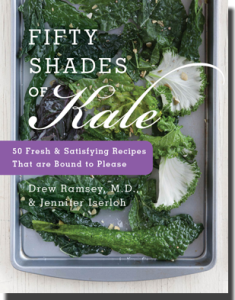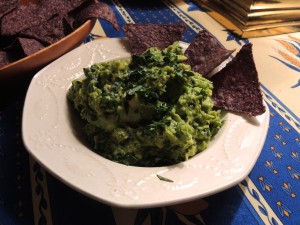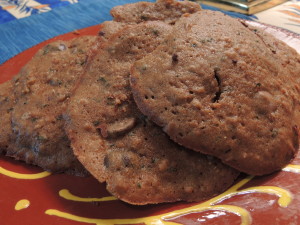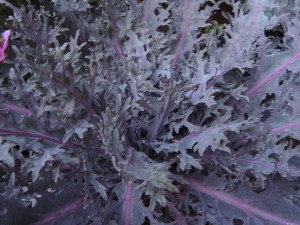 It’s that time of year—when the days shorten, the weather grows cooler, and the kale perks up, along with the arugula, Swiss chard, and broccoli. And this year, just in time for National Kale Day—October 1—I finally know what to do with a bumper crop. Dr. Drew Ramsey and Jennifer Iserloh (“the Skinny Chef”) have a daring new book, Fifty Shades of Kale: 50 Fresh & Satisfying Recipes That Are Bound to Please, which tells you how to add kale to almost anything, from mojitos to sorbet. So if you think of kale as a boring vegetable that’s too “healthy” to be enjoyable, it’s time to reconsider.
It’s that time of year—when the days shorten, the weather grows cooler, and the kale perks up, along with the arugula, Swiss chard, and broccoli. And this year, just in time for National Kale Day—October 1—I finally know what to do with a bumper crop. Dr. Drew Ramsey and Jennifer Iserloh (“the Skinny Chef”) have a daring new book, Fifty Shades of Kale: 50 Fresh & Satisfying Recipes That Are Bound to Please, which tells you how to add kale to almost anything, from mojitos to sorbet. So if you think of kale as a boring vegetable that’s too “healthy” to be enjoyable, it’s time to reconsider.


Last night I gave some of the recipes a test run, when a neighbor came to dinner. Informed that every course was going to feature kale, she did not exactly express enthusiasm. But the kale guacamole that we served with hors d’oeuvres (photo, right) eased her concerns. For the main course, we offered a choice of three unusual kinds of pesto for a taste test—green olive pesto, red pepper pesto, and kale pesto (2 parts kale to one part basil, with garlic, Parmesan cheese, olive oil, and walnuts)—and she actually chose the kale pesto as her favorite. For dessert, we baked kale chocolate chip cookies (right), as gooey and delicious as Mom’s ever tasted, fresh from the oven. When all was said and done, she declared the dinner a success—though mainly because she couldn’t taste the kale, even though she’d eaten at least of cup of it by that point. (Chopped up, it blends in with the strong flavors around it. If this sounds suspiciously like the approach taken in Jessica Seinfeld’s book Deceptively Delicious, there’s a reason for that—Iserloh was the recipe developer for that book, too.)
 Given this encouragement to explore kale recipes, next year I would like to grow more than the usual lacinato and curly kale. There are actually close to 50 varieties, including some heirlooms that sound intriguing. “Red Russian is a show-stopper,” writes Marie Iannotti in The Beginner’s Guide to Growing Heirloom Vegetables. “The frilly blue-green leaves with purple veins and stems make them a study in cool colors.” (Amazingly, I was able to buy a Red Russian from the plant shop across the street last Sunday–the only kale plant they had in stock–photo, left). Not surprisingly, Red Russian comes from Russia and does well in cold weather, Iannotti writes. “It not only gets sweeter, but its color intensifies in the cold.” What’s more, it’s quick and easy to grow and even stays mild and sweet through the summer. Other Russian heirloom varieties include Gulag Stars, Russian Frills, and Siberian. Time to get planting!
Given this encouragement to explore kale recipes, next year I would like to grow more than the usual lacinato and curly kale. There are actually close to 50 varieties, including some heirlooms that sound intriguing. “Red Russian is a show-stopper,” writes Marie Iannotti in The Beginner’s Guide to Growing Heirloom Vegetables. “The frilly blue-green leaves with purple veins and stems make them a study in cool colors.” (Amazingly, I was able to buy a Red Russian from the plant shop across the street last Sunday–the only kale plant they had in stock–photo, left). Not surprisingly, Red Russian comes from Russia and does well in cold weather, Iannotti writes. “It not only gets sweeter, but its color intensifies in the cold.” What’s more, it’s quick and easy to grow and even stays mild and sweet through the summer. Other Russian heirloom varieties include Gulag Stars, Russian Frills, and Siberian. Time to get planting!
